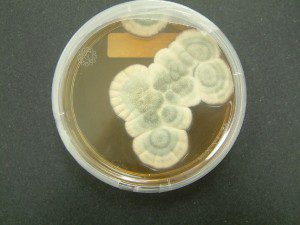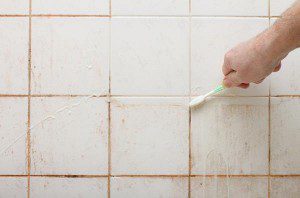5 Interesting Mold Facts
MoldMold is a type of fungus that grows in damp or humid conditi... More is a complicated natural substance because it is beneficial in certain instances and harmful in others. Most homeowners associate moldMold is a type of fungus that grows in damp or humid conditi... More with moldMold is a type of fungus that grows in damp or humid conditi... More growth in homes which causes property damage and a range of health issues including allergies and even infections. Many of the negative mold facts have been covered extensively as it is important for homeowners to understand the potential dangers of moldMold is a type of fungus that grows in damp or humid conditi... More in their homes. This article discusses interesting, little known facts about what scientists consider good moldMold is a type of fungus that grows in damp or humid conditi... More and the beneficial ways in which it is used. However, you must remember that moldMold is a type of fungus that grows in damp or humid conditi... More growing in your home is never a good thing and you should contact a mold remediation service provider as soon as you discover the growth.
Some Mold is Good for your Health

Penicillium chrysogenum moldMold is a type of fungus that grows in damp or humid conditi... More contains the antibiotic Penicillin.
Let’s start with a fact that goes against what many people understand about moldMold is a type of fungus that grows in damp or humid conditi... More. While most types of moldMold is a type of fungus that grows in damp or humid conditi... More are definitely bad for your health, there are some types that are actually beneficial. The most common example of good moldMold is a type of fungus that grows in damp or humid conditi... More is Penicillium moldMold is a type of fungus that grows in damp or humid conditi... More, the active ingredient in penicillin. Penicillin is widely used as an antibiotic and it is effective because Penicillium moldMold is a type of fungus that grows in damp or humid conditi... More naturally kills many types of bacteria. Alexander Fleming, a Scottish scientist, accidentally discovered the ability of Penicillium to kill bacteria in 1928 when a sample of the moldMold is a type of fungus that grows in damp or humid conditi... More ended up in one of Fleming’s petri dishes containing bacteria. Penicillin is one of the first successful antibiotics and has been in use since 1942.
Another type of moldMold is a type of fungus that grows in damp or humid conditi... More that has some beneficial qualities is Neurospora crassa which is a bread moldMold is a type of fungus that grows in damp or humid conditi... More. Scientists study this moldMold is a type of fungus that grows in damp or humid conditi... More because its life cycle provides insight on larger questions about the development and adaptation of species, cells, and tissues.
Mold is Good in your Garden
If you have a garden in your yard, the presence of moldMold is a type of fungus that grows in damp or humid conditi... More will help it grow. Certain types of moldMold is a type of fungus that grows in damp or humid conditi... More can speed up the decomposition process of organic materialsOrganic materials are derived from living organisms, such as... More like leaves and branches to help keep the soil healthy and full of beneficial nutrients.
Mold Growth is Colorful
Everyone is familiar with the sight of black moldMold is a type of fungus that grows in damp or humid conditi... More, one of the most dangerous types of moldMold is a type of fungus that grows in damp or humid conditi... More that appears as ugly black and gray splotches in your home. However, moldMold is a type of fungus that grows in damp or humid conditi... More may appear in several different colors such as green, orange, and white. It is important to be able to identify different colors of moldMold is a type of fungus that grows in damp or humid conditi... More in your home so that you can take action to remove it. No moldMold is a type of fungus that grows in damp or humid conditi... More is good in your home, regardless of its color.
Mold and Mildew are Different

You can remove mildewMildew is a type of fungus that grows on damp surfaces, typi... More easily from affected household surfaces.
The terms “moldMold is a type of fungus that grows in damp or humid conditi... More” and “mildewMildew is a type of fungus that grows on damp surfaces, typi... More” are sometimes used interchangeably which creates some confusion about whether they are the same thing. MoldMold is a type of fungus that grows in damp or humid conditi... More and mildewMildew is a type of fungus that grows on damp surfaces, typi... More are each a type of fungus, but they have several key differences. The biggest difference is that mildewMildew is a type of fungus that grows on damp surfaces, typi... More only grows on surfaces while moldMold is a type of fungus that grows in damp or humid conditi... More can penetrate beneath the surfaces of affected materials to cause deep structural damage. MildewMildew is a type of fungus that grows on damp surfaces, typi... More is also much easier to remove because it stays on the surface of the affected materials.
For a more in-depth explanation, check out Mold vs Mildew: The Main Differences Between Mold and Mildew.
Mold is One of Many Fungal Species
There are more than 200,000 species of fungus in existence including mushrooms, lichenLichen is a symbiotic organism made up of a fungus and an al... More, yeast, and truffles to name a few. MoldMold is a type of fungus that grows in damp or humid conditi... More is just one of these fungal species. There are over 100,000 species of moldMold is a type of fungus that grows in damp or humid conditi... More that are generally categorized into one of the following three categories: allergenic, pathogenic, and toxigenic. Many species of fungus have the ability to morph into other fungal species or adopt the characteristics of multiple species.
MoldMold is a type of fungus that grows in damp or humid conditi... More is a more useful and interesting substance than many people believe, but it is still dangerous in your home. The presence of moldMold is a type of fungus that grows in damp or humid conditi... More indoors can leadLead is a heavy metal that can be toxic to humans, especiall... More to serious property damage and the sporesSpores are microscopic reproductive units of fungi or mold t... More are much more harmful to your health indoors because of the confined space. You must contact a mold removal professional once you find moldMold is a type of fungus that grows in damp or humid conditi... More to have it removed before it results in major property damage or serious health effects.












